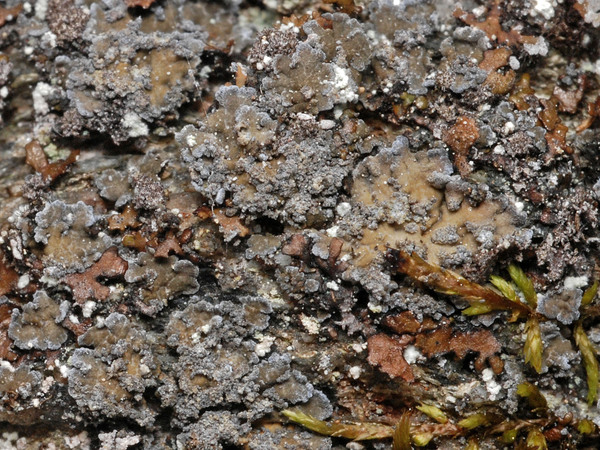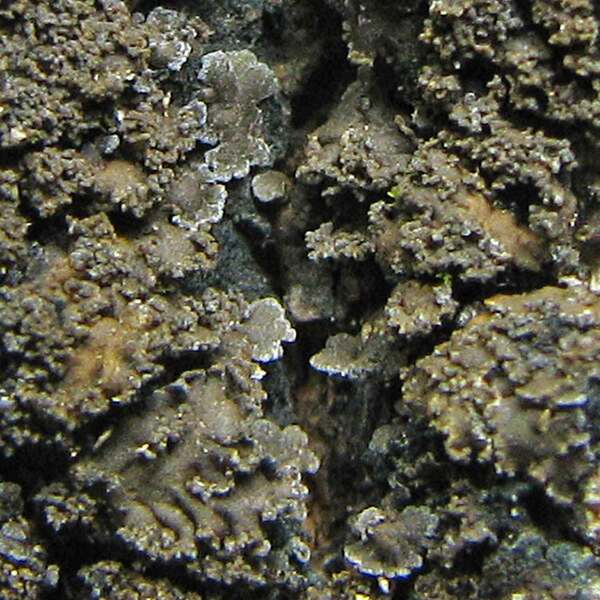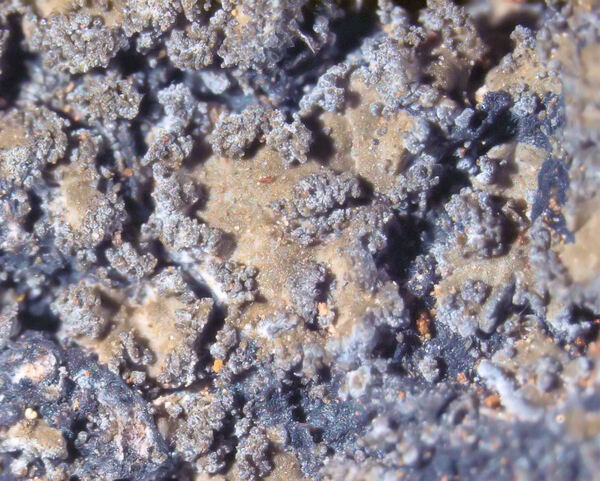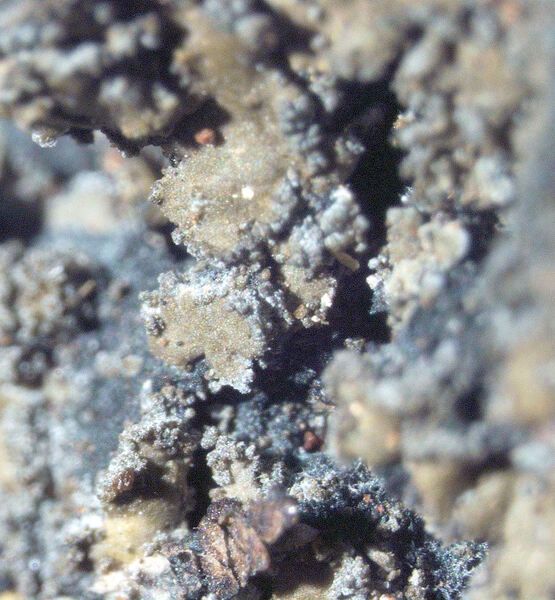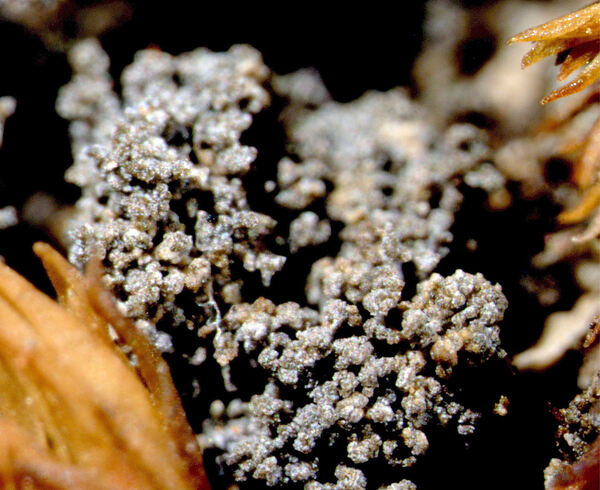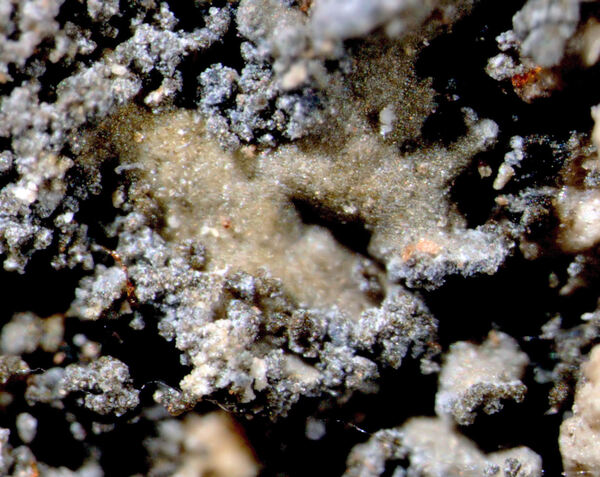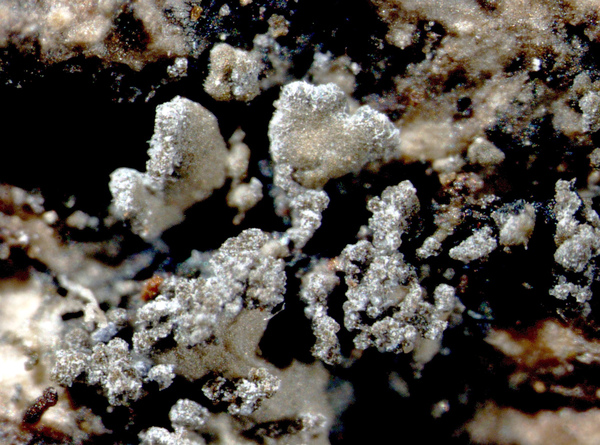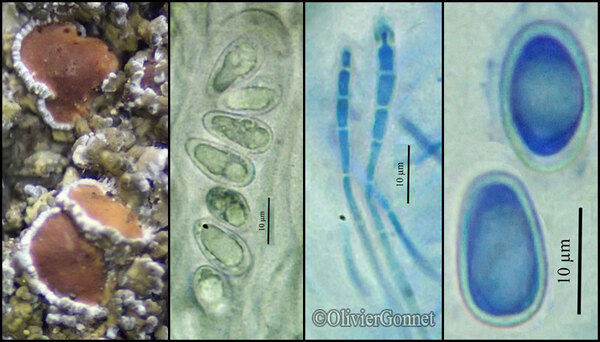Fuscopannaria mediterranea (Tav.) P.M. Jørg.
J. Hattori Bot. Lab., 76: 205, 1994. Basionym: Pannaria mediterranea Tav. - Port. Acta Biol., B, 8: 5, 1965.
Synonyms:
Distribution: N - Emil (Fariselli & al. 2020), Lig (Giordani & Incerti 2008). C - Tosc (Benesperi & al. 2007, Benesperi 2011), Marc (Nimis & Tretiach 1999), Umb (Ravera 2000, Ravera & al. 2006), Laz (Massari & Ravera 2002, Ravera & Genovesi 2008), Abr (Nimis & Tretiach 1999), Mol (Caporale & al. 2008, Paoli & al. 2015, Caporale & Ravera 2020), Sar (Vezda Lich. Rar.Exs. 55, Zedda 1995, 2002, 2002b, Loi & al. 2000, Zedda & Sipman 2001, Zedda & al. 2001, Rizzi & al. 2011, Di Nuzzo & al. 2022). S - Camp (Nimis & Tretiach 2004, Garofalo & al. 2010, Brunialti & al. 2013, Ravera & Brunialti 2013, Catalano & al. 2016), Bas (Potenza & al. 2014), Cal (Puntillo 1995, 1996), Si (Grillo & al. 2007, Brackel 2008c, Liistro & Cataldo 2011, Campisi & al. 2020).
Description: Thallus crustose-subsquamulose, heteromerous, episubstratic, bluish grey to olive-brown, of 2-3 mm wide, contiguous or imbricate, sorediate areoles/squamules with a white-felted, upturned margin, developing on a thin, often inconspicuous, blue-black hypothallus usually forming a thick, cracked crust. Soredia granular, lead-grey or violet-grey, arranged in marginal, sometimes finally confluent soralia, which often appear woolly in herbarium material (accumulation of fine crystals). Upper cortex sclerenchymatous, 30-40 µm thick, of thick-walled cells. Apothecia very rare, lecanorine, 0.5-1.5(-2) mm across, with a brown disc and a sorediate thalline margin. Proper exciple subparaplectenchymatous; epithecium pale brown; hymenium colourless, up to 100 µm high, I+ blue-green turning reddish; paraphyses simple, coherent, slightly swollen at apex; hypothecium colourless. Asci 8-spored, subcylindrical to clavate, with a I+ blue tholus and an internal, more intensely I+ blue structure. Ascospores 1-celled, hyaline, ellipsoid, with a thick epispore and broadly attenuated apices, 13-16 x 7-8 µm without epispore, 17-23 x 8-9 µm with epispore. Photobiont cyanobacterial (Nostoc, the cells in clusters). Spot tests: thallus K-, C-, KC-, P-, UV-. Chemistry: terpenoids and aliphatic acids.Note: a mild-temperate to Mediterranean species found on bark of ancient broad-leaved trees in semi-natural, rather undisturbed, humid woodlands, more rarely on siliceous, mossy rocks; mostly Tyrrhenian in Italy.
Growth form: Squamulose
Substrata: bark
Photobiont: cyanobacteria, filamentous (e.g. Nostoc, Scytonema)
Reproductive strategy: mainly asexual, by soredia, or soredia-like structures (e.g. blastidia)
Most common in areas with a humid-warm climate (e.g. most of Tyrrenian Italy)
Commonnes-rarity: (info)
Alpine belt: absent
Subalpine belt: absent
Oromediterranean belt: absent
Montane belt: extremely rare
Submediterranean belt: extremely rare
Padanian area: absent
Humid submediterranean belt: rare
Humid mediterranean belt: rather rare
Dry mediterranean belt: absent

Predictive model
Herbarium samples
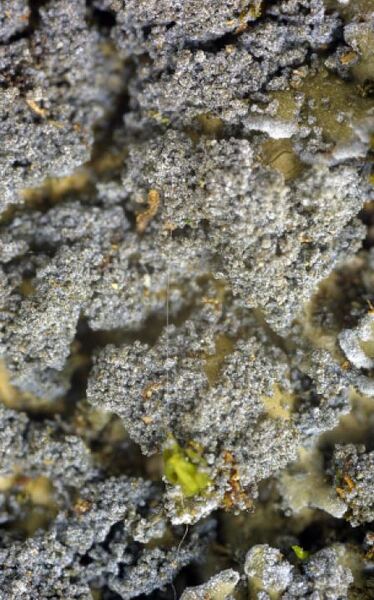

Felix Schumm - CC BY-SA 4.0
Image from: F. Schumm (2008) - Flechten Madeiras, der Kanaren und Azoren. Beck, OHG - ISBN: 978-3-00-023700-3
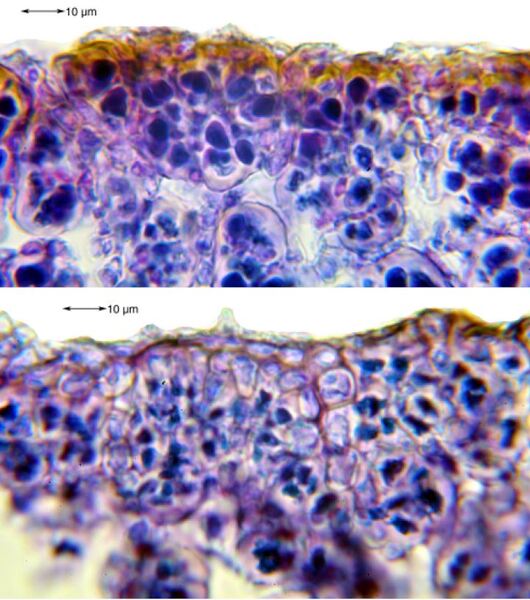

Felix Schumm - CC BY-SA 4.0
Image from: F. Schumm (2008) - Flechten Madeiras, der Kanaren und Azoren. Beck, OHG - ISBN: 978-3-00-023700-3
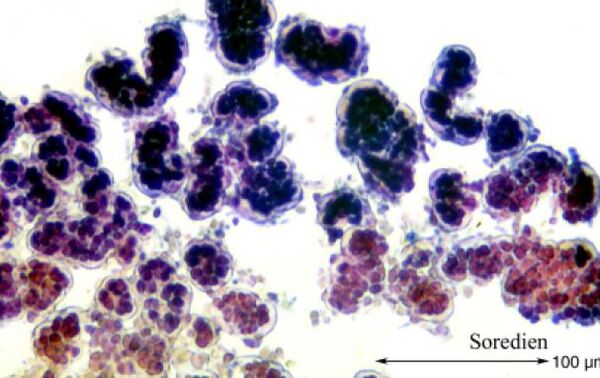

Felix Schumm - CC BY-SA 4.0
Image from: F. Schumm (2008) - Flechten Madeiras, der Kanaren und Azoren. Beck, OHG - ISBN: 978-3-00-023700-3
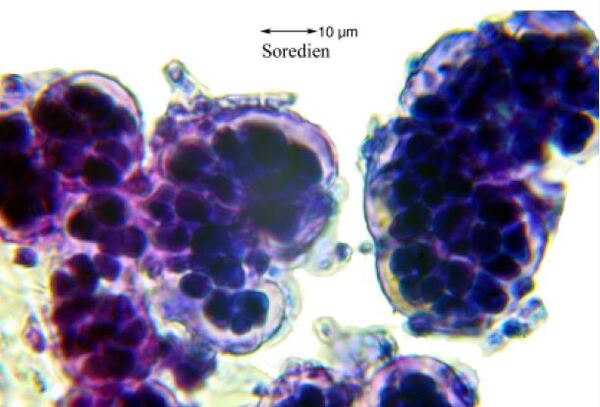

Felix Schumm - CC BY-SA 4.0
Image from: F. Schumm (2008) - Flechten Madeiras, der Kanaren und Azoren. Beck, OHG - ISBN: 978-3-00-023700-3
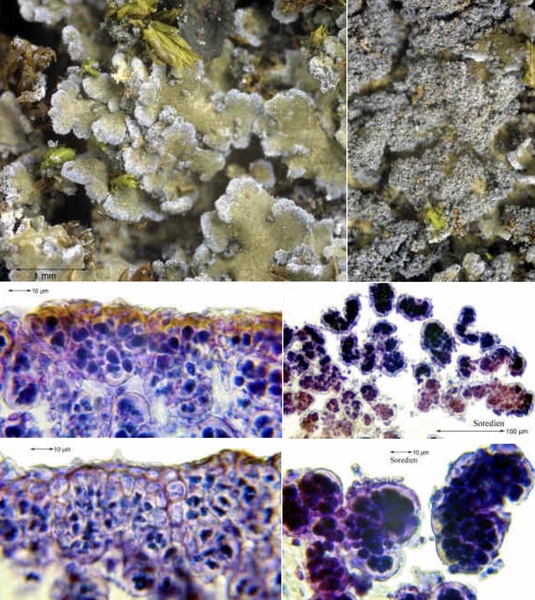

Felix Schumm – CC BY-SA 4.0
Image from: F. Schumm (2008) - Flechten Madeiras, der Kanaren und Azoren. Beck, OHG - ISBN: 978-3-00-023700-3
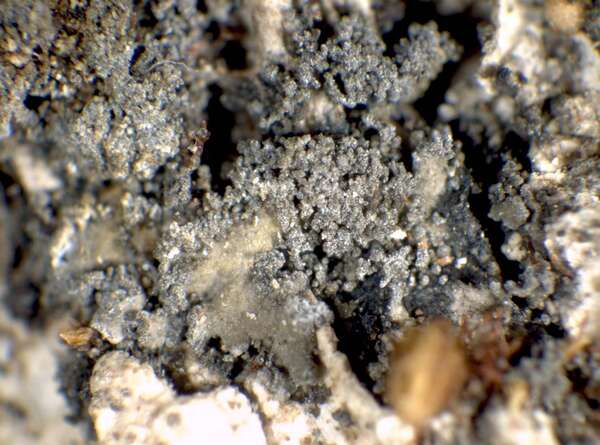

P.L. Nimis; Owner: Department of Life Sciences, University of Trieste
Herbarium: TSB (18231)
2001/11/28
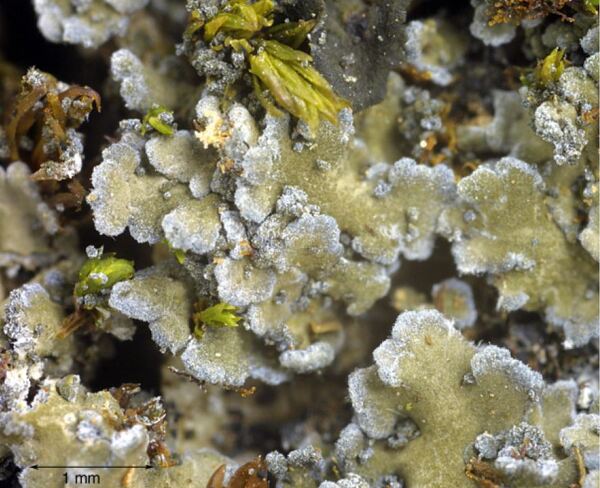

Felix Schumm - CC BY-SA 4.0
Image from: F. Schumm (2008) - Flechten Madeiras, der Kanaren und Azoren. Beck, OHG - ISBN: 978-3-00-023700-3
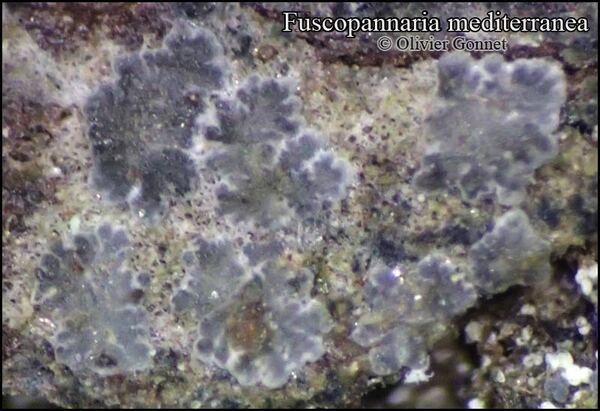
Courtesy Danièle et Olivier Gonnet - Source: https://www.afl-lichenologie.fr/Photos_AFL/Photos_AFL_F/Texte_F_1/Fuscopannaria_mediterranea.htm
France, Cucuruzzu - Corse
6/4/2011
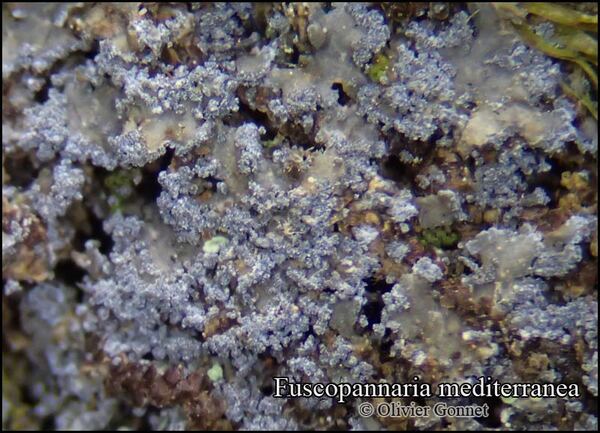
Courtesy Danièle et Olivier Gonnet - Source: https://www.afl-lichenologie.fr/Photos_AFL/Photos_AFL_F/Texte_F_1/Fuscopannaria_mediterranea.htm
France, Cucuruzzu - Corse
6/4/2011
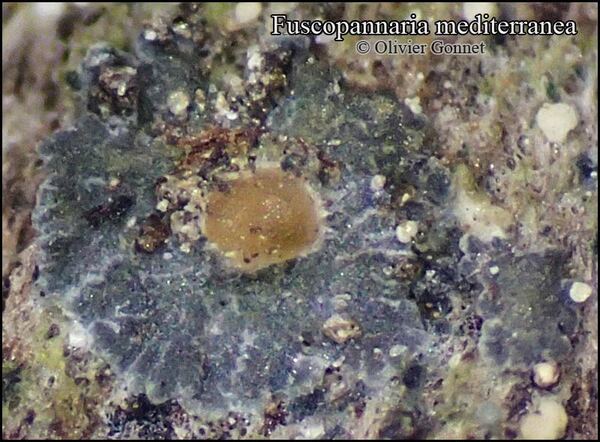
Courtesy Danièle et Olivier Gonnet - Source: https://www.afl-lichenologie.fr/Photos_AFL/Photos_AFL_F/Texte_F_1/Fuscopannaria_mediterranea.htm
France, Cucuruzzu - Corse
6/4/2011
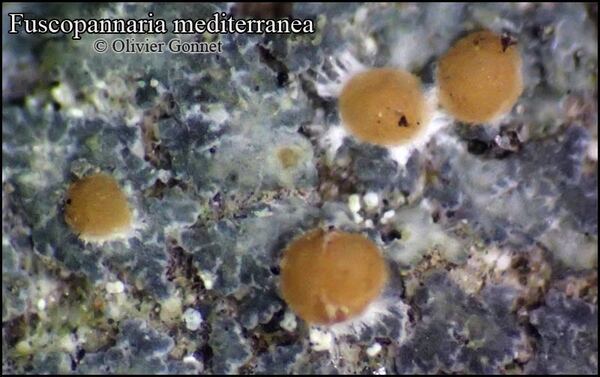
Courtesy Danièle et Olivier Gonnet - Source: https://www.afl-lichenologie.fr/Photos_AFL/Photos_AFL_F/Texte_F_1/Fuscopannaria_mediterranea.htm
France, Cucuruzzu - Corse
6/4/2011
Growth form: Squamulose
Substrata: bark
Photobiont: cyanobacteria, filamentous (e.g. Nostoc, Scytonema)
Reproductive strategy: mainly asexual, by soredia, or soredia-like structures (e.g. blastidia)
Most common in areas with a humid-warm climate (e.g. most of Tyrrenian Italy)
Commonnes-rarity: (info)
Alpine belt: absent
Subalpine belt: absent
Oromediterranean belt: absent
Montane belt: extremely rare
Submediterranean belt: extremely rare
Padanian area: absent
Humid submediterranean belt: rare
Humid mediterranean belt: rather rare
Dry mediterranean belt: absent

Predictive model
| Herbarium samples |


Felix Schumm - CC BY-SA 4.0
Image from: F. Schumm (2008) - Flechten Madeiras, der Kanaren und Azoren. Beck, OHG - ISBN: 978-3-00-023700-3


Felix Schumm - CC BY-SA 4.0
Image from: F. Schumm (2008) - Flechten Madeiras, der Kanaren und Azoren. Beck, OHG - ISBN: 978-3-00-023700-3


Felix Schumm - CC BY-SA 4.0
Image from: F. Schumm (2008) - Flechten Madeiras, der Kanaren und Azoren. Beck, OHG - ISBN: 978-3-00-023700-3


Felix Schumm - CC BY-SA 4.0
Image from: F. Schumm (2008) - Flechten Madeiras, der Kanaren und Azoren. Beck, OHG - ISBN: 978-3-00-023700-3


Felix Schumm – CC BY-SA 4.0
Image from: F. Schumm (2008) - Flechten Madeiras, der Kanaren und Azoren. Beck, OHG - ISBN: 978-3-00-023700-3


P.L. Nimis; Owner: Department of Life Sciences, University of Trieste
Herbarium: TSB (18231)
2001/11/28


Felix Schumm - CC BY-SA 4.0
Image from: F. Schumm (2008) - Flechten Madeiras, der Kanaren und Azoren. Beck, OHG - ISBN: 978-3-00-023700-3

Courtesy Danièle et Olivier Gonnet - Source: https://www.afl-lichenologie.fr/Photos_AFL/Photos_AFL_F/Texte_F_1/Fuscopannaria_mediterranea.htm
France, Cucuruzzu - Corse
6/4/2011

Courtesy Danièle et Olivier Gonnet - Source: https://www.afl-lichenologie.fr/Photos_AFL/Photos_AFL_F/Texte_F_1/Fuscopannaria_mediterranea.htm
France, Cucuruzzu - Corse
6/4/2011

Courtesy Danièle et Olivier Gonnet - Source: https://www.afl-lichenologie.fr/Photos_AFL/Photos_AFL_F/Texte_F_1/Fuscopannaria_mediterranea.htm
France, Cucuruzzu - Corse
6/4/2011

 Index Fungorum
Index Fungorum
 GBIF
GBIF

